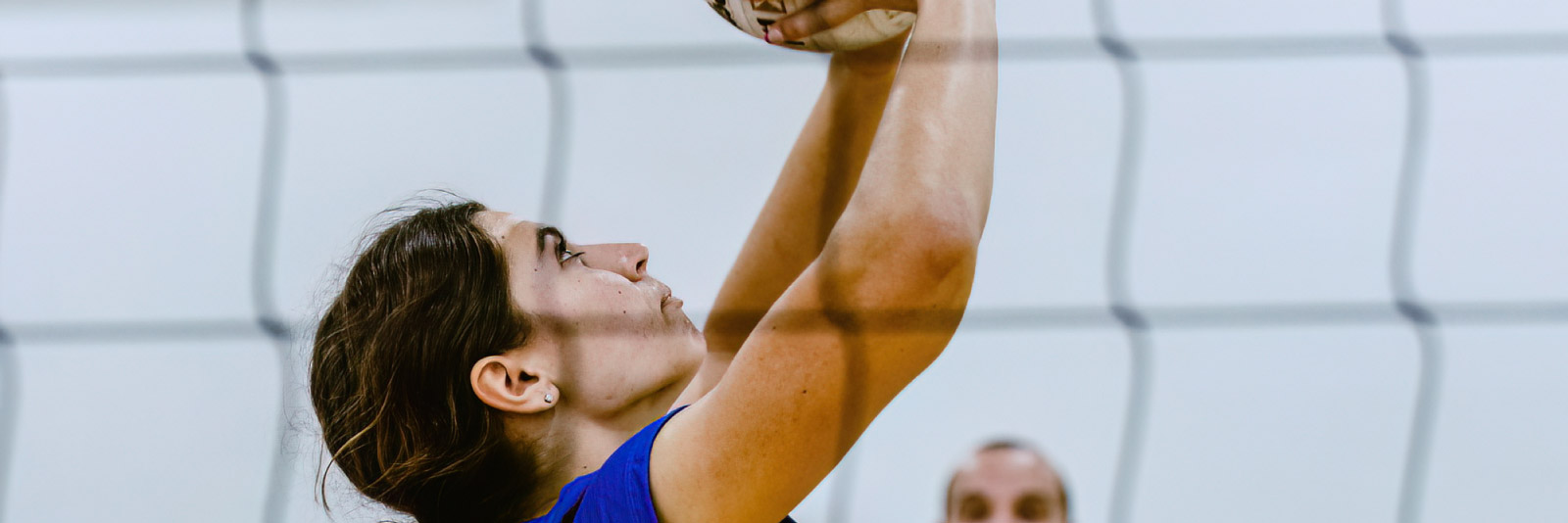The AAU has several branches, including one for volleyball. While not as popular as other sports like basketball and football, volleyball has grown steadily over the years. In fact, there are thousands of collegiate-level programs that are highly competitive across the country. Playing AAU volleyball can help prepare student-athletes for college volleyball programs who might not have access to these types of opportunities at their schools. Opportunities that can challenge them and even be beneficial for getting recruited to play at the collegiate level.
If you’re interested in playing volleyball at a competitive level but don’t know where to start, then this guide will help you get started.
What is AAU volleyball?
The AAU Volleyball National Championships, established in 1996, is an annual event for youth volleyball teams held in the United States. The tournament is hosted by the Amateur Athletic Union (AAU) and takes place at various locations throughout the country.
The tournament has grown from its humble beginnings as a small regional tournament to become one of the largest volleyball competitions in the world. Each year, thousands of teams from across the nation to compete for national titles in various divisions.
AAU volleyball membership
AAU volleyball membership is valid from September 1st to August 31st of the following year. To participate, a membership is required for all AAU licensed events. Whether you are a solo athlete and looking to join an existing a team or you’re a team looking for events, you can sign up and compete.
How much does AAU volleyball cost?
The cost of AAU volleyball depends on if you’re paying as an individual or as a team. For individual athletes, it costs $20-$22 per season. Additionally, there may be costs associated with joining a team. Not all teams charge to try out, but teams that do typically charge a $50 fee.
To apply to a club, an individual membership must first be purchased. After, individual club costs vary by level. For youth athletes interested in playing for a level 1 male or female club, the costs are $30. Level 2 is $60 and level 3 events are $300. Adult events for levels 1-3 are $50, $80, and $320, respectively.
AAU volleyball divisions
AAU volleyball divisions are dictated by age. The youngest a junior athlete can be to play volleyball is 8 years old. However, there are some rules regarding which division an athlete can compete in.
Each youth division has a 24-month age window that qualifies participation. The youngest division is the 10 & Under and the oldest is 18 & Under.
Check out the AAU age definition page to learn more about the different divisions of AAU boys’ and girls’ volleyball and their age qualification.
Is AAU volleyball competitive?
Because the AAU’s primary focus is on providing opportunities for athletes of all skill levels to participate in organized sports, the competition level can vary from club to club, region to region, and even tournament to tournament.
Some AAU events may have more competitive teams than others. For the purpose of competition at the national level, AAU volleyball divisions are ranked as follows:
- Open Division: Highest level of competition
- Club Division: Middle level of competition
- Classic Division: Lowest level of competition
This empowers athletes and teams to select the level of competition they’re most interested in.
AAU volleyball schedule, tournaments and clubs
Club practice schedules are determined on an individual club basis. There are pre-existing clubs that athletes can join across the country, or you can establish your own. To learn more about clubs near you, use the AAU’s Find a Club tool to contact team coaches regarding the schedule for practices and games throughout the season.
When does AAU volleyball season start?
AAU volleyball season kicks off in October and ends with the AAU National Championships which occur throughout June and July.
Tournament structure is typically one or multi-day games, generally on the weekends during AAU volleyball season for all ages and genders.
The key tournaments of the AAU volleyball season are:
- AAU Volleyball Classic
- AAU West Coast Championships
- AAU Jr National Volleyball Championships
- AAU Volleyball Festival
All teams who have completed the entry requirements are eligible to compete in the National Championships, West Coast Championships, and Volleyball Festival, regardless of placing or participation in a Super Regional or Grand Prix tournament.
For the most up-to-date schedule, please visit AAU Volleyball Grand Prix & Super Regional Tournaments for more details
AAU volleyball and college recruiting
Earning college scholarships and making rosters are two things that playing experience can help with. Coaches want to see that you’re challenging yourself, and time spent on AAU teams helps to demonstrate this.
Taking the steps to train and get better on the court will help you get recruited. It is preferable to begin your freshman year of high school at least if not sooner. Coaches do attend games for high school-age athletes, so there is an opportunity for exposure within those divisions.
There are rules regarding when coaches can contact you. To learn more, check out our NCAA Recruiting Rules and create a free NCSA profile to contact coaches using our messaging center.
